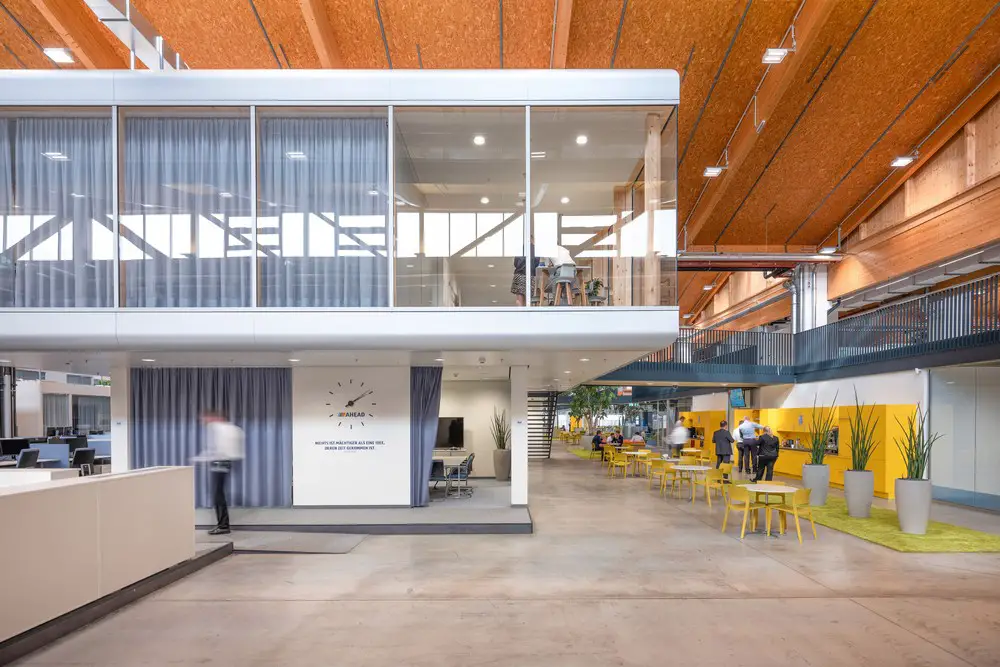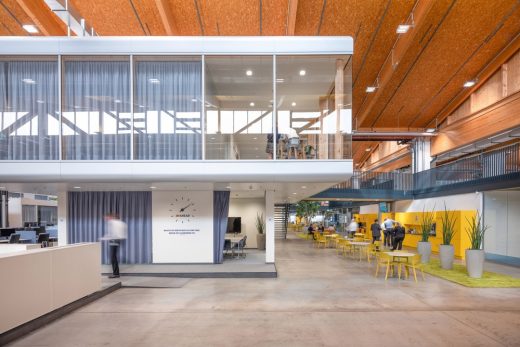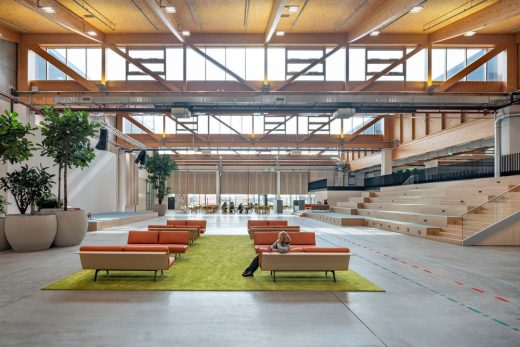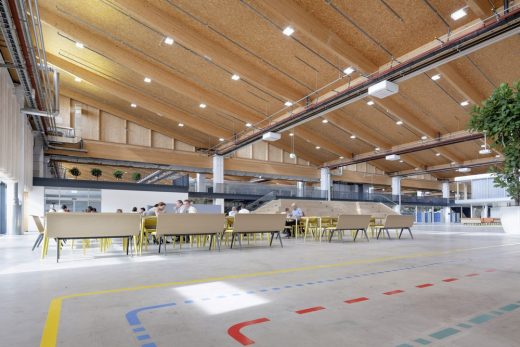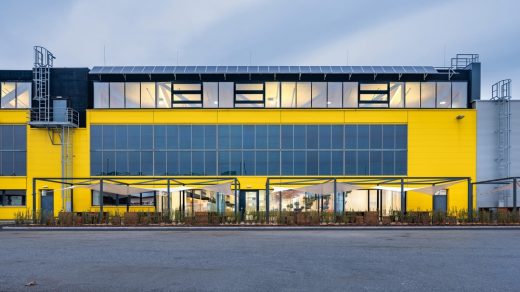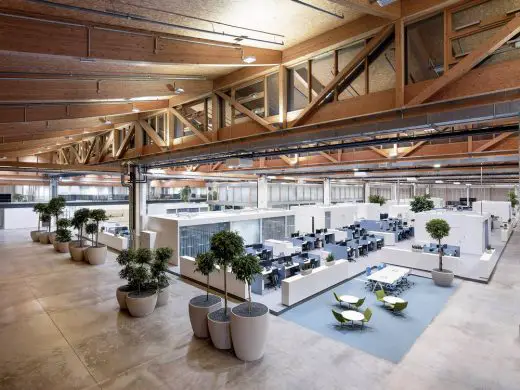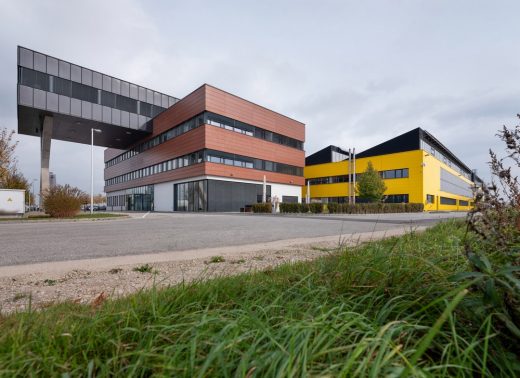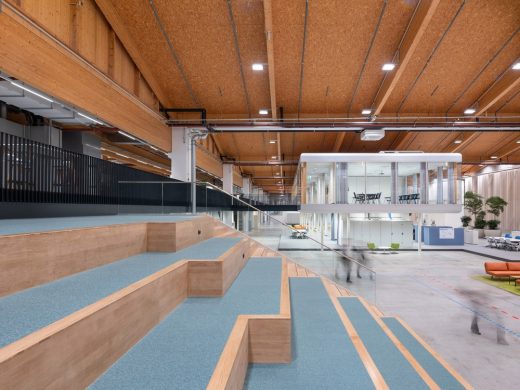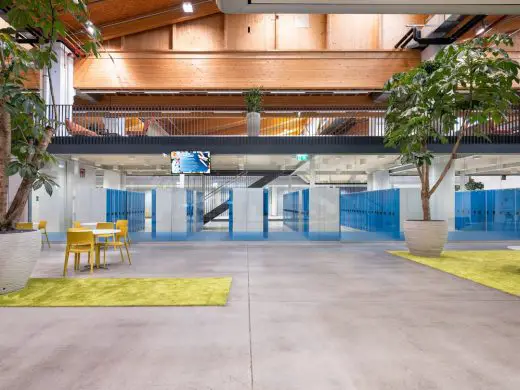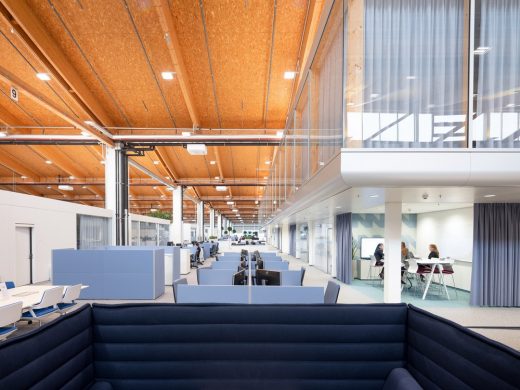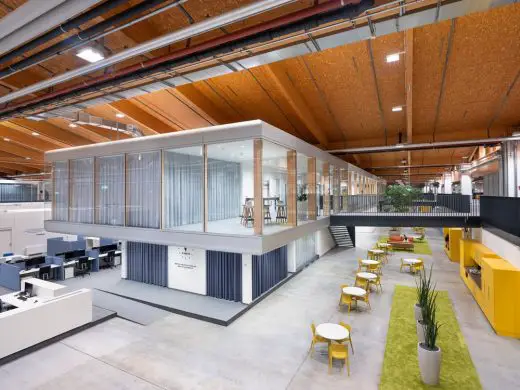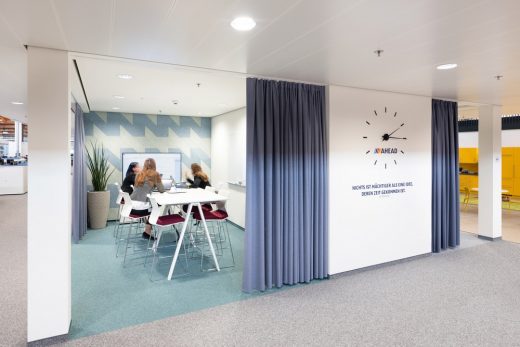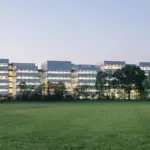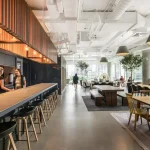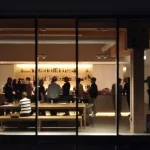HOFER ALPHA Retail Network, Eberstalzell Commercial Building, Contemporary Architecture Design
HOFER ALPHA Retail Network in Austria
10 Feb 2020
HOFER ALPHA Retail Network
Design: ATP architects engineers
Location: Eberstalzell, Austria
The new premisses for HOFER ALPHA Retail Network is in a former production hall covering 20,000 square meters. The building is being refurbished and transformed into a multifunctional competence center. The client, the food retailer HOFER KG, teamed up with ATP to carry out this pioneering project, whose very clear objective is to develop a unique “office landscape”.
In order to be able to zone a building of this scale, ATP selected a deliberately expressive architectural language. The seven-meter-high shed roof spans an imposing auditorium space, which is generously planted with real trees and surrounded by the working spaces of HOFER and the facilities of the University of Applied Sciences Upper Austria.
The transparent, flexibly usable office zones contain a range of spaces into which users can retreat. The bright and innovatively shaped meeting rooms act like “mounds” that structure the broad hall in which apparently weightless timber-and-steel ‘ships’ appear to float.
Eberstalzell is a small town of around 2,700 people in the foothills of the Alps in the Upper Austrian district of Wels-Land. The surrounding industrial zone has been growing steadily since the mid-2010s due to the fact that the town, despite its idyllic rural setting, is also perfectly located on the transport network. The existing building is directly situated at the access to the A1 Western Motorway.
ATP integrally designed this project in all specialist areas (architecture, structural, building services and electrical engineering and interior design) and all design phases from design to execution, including the color and material concepts and furnishing.
The spatial program drawn up by ATP Innsbruck restructures the existing hall as an interactive and collaborative campus capable of integrating a range of users.
The functionality of this unusual spatial program supports “activity-based working”. The basic notion behind “activity-based working” is that a range of working areas with dedicated zones and spaces are offered within a single building. Each user selects a workplace in line with their task, activity, or current need.
On the basis of a needs analysis ATP worked with its Innsbruck D&R Studio to design an open office concept with flexibly usable working and social areas. The focus of the project is people and their needs. The range of spaces on offer includes individual workspaces, focused spaces for concentrated work, and team areas for communication and cooperation as well as spaces for regeneration.
According to Paul Ohnmacht, Head of Design at ATP Innsbruck, “the challenging question was ‘how can I motivate the employees to accept the new workplaces and the unusual office landscape?’” ATP solved these questions through targeted improvements to the large hall in which these office cabins are located. This is filled with greenery and offers a range of opportunities for retreat and relaxation.
A large, interactive meeting zone is located right next to the new entrance area in the southeast of the building, while the areas surrounding the auditorium are fitted out as project spaces. To the north of these one finds the open-space workplaces, retail laboratories, and creative spaces of the University of Applied Sciences Upper Austria.
Open, semi-open, and closed meeting rooms are available. The organizational units are arranged perpendicular to the hall and, together with the longitudinal functional areas, form a rigid unit. The overall result is that the orientation and zoning within the building are very clear and the various areas are harmoniously integrated, without safety considerations being compromised in any way.
The hall has a load-bearing timber roof structure with large, south-facing windows in the sawtooth roof. It is divided into zones by a supply-spine covering two-thirds of the area of the upper level.
Bridges connect the spine-gallery with the two apparently weightless ‘ships’, which contain seminar and training rooms. Here, one literally floats above the office landscape of the ground floor while enjoying impressive views towards the distant areas of the hall.
The spectacular intervention of the two new ‘ships’ – apparently floating structures of steel and glass – has a major impact on the redesign of the existing hall. “It is essential to alter the scale in a hall of this size in order to both develop expressive architecture and break down the area of 20,000 m2”, says architect and Lead Project Manager Lilo Dellantonio.
The steel columns above ground floor level are enhanced by laminated timber slabs. The ships themselves are constructed entirely of timber. The selection of this material, which is also recyclable, makes it possible to realize such an economical and time-saving solution within an existing building.
Originally built to passive house standards in 2006 the existing hall already offered a sound infrastructure: The sawtooth roof has large, south-facing windows which offer protection against glare. The building has a dedicated geothermal energy reservoir below the floorplate which is warmed by solar energy during the summer. Large-scale natural night-time ventilation provides cooling in summer. This ensures a spatial environment that provides positive working conditions.
ATP worked with the research company ATP sustain to develop a building services concept that was based on a detailed survey of the existing building, further investigations, and a building simulation. This concept involved the adaptation of the heating, ventilation, cooling, and sprinkler systems and the sanitary areas in line with the requirements of the new use of the building.
The upgraded lighting solution provides high-quality workplaces. In the hall, LED ceiling spots mounted at a height of seven meters offer an illumination of 500 lx, as do the spots in the enclosed spaces. The electricity supply and IT cabling were upgraded in order to meet the requirements of the innovation center. Security is guaranteed by the state-of-the-art alarm and entry control systems.
HOFER ALPHA Retail Network, Austria – Building Information
Architects: ATP architects engineers
Client: HOFER KG
Location: Eberstalzell, AT
Construction start: 10/2017
Completion: 10/2018
Gross floor area: 23,000 m²
Gross built volume: 180,000 m³
Integrated design:
ATP architects engineers (Innsbruck)
Lead Project Manager: Lilo Dellantonio
D&R Studio Innsbruck: Paul Ohnmacht
Project leader, electrical engineering: Andreas Prantner-Meißnitzer
Project leader, HVAC: Oliver Thurnbichler
Project leader, structural engineering: David Gasser
Building simulation: ATP sustain
External design partner: M.O.O.CON (Use and needs analysis)
Photography: ATP/Pierer
HOFER ALPHA Retail Network in Eberstalzell, Austria images / information received 100220
Location: Eberstalzell, Austria
Architecture in Austria
Vienna Architecture Walking Tours by e-architect
Motorway Maintenance Centre Salzburg
Design: Marte.Marte Architekten
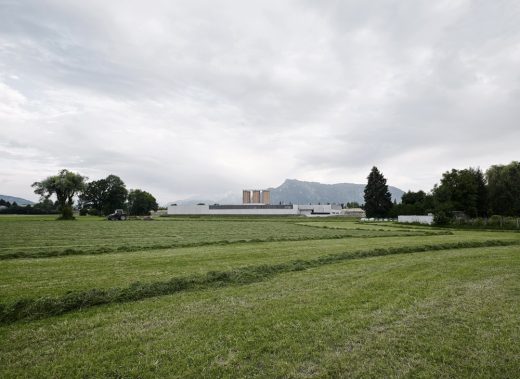
photo © Marc Lins
Motorway Maintenance Centre Salzburg
Mobile Art Pavilion ‘White Noise’ Salzburg
Design: SOMA
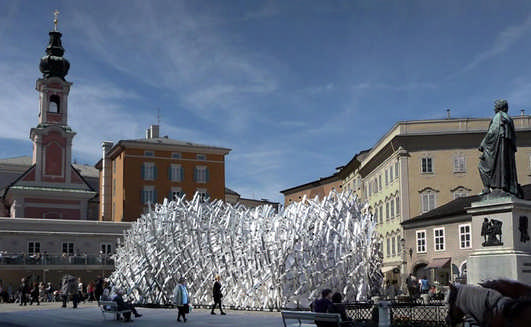
photo : F Hafele
Mobile Art Pavilion Salzburg
Austria Architect : contact details
Comments / photos for the HOFER ALPHA Retail Network in Eberstalzell, Austria page welcome

